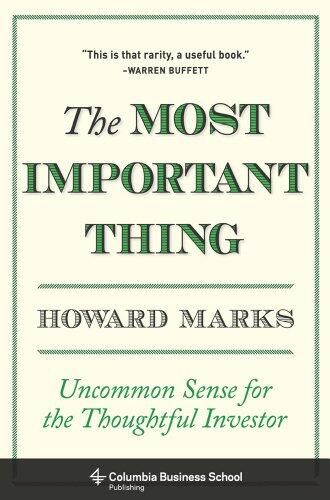Doji Formations: Learn How to Interpret Them to Help Trading Strategies
Contents
In a doji, a candle’s real body will make up to 5% of the size of the entire candle’s range; any more than that, it becomes a spinning top. Here, we take a detailed look at the history of Doji candles, how to spot them on a trading chart, and how you can apply them to your trading practice. Additionally, you cannot be assured that the price will continue to move in the same direction once the candle is confirmed. The future of the trend’s direction is mainly regulated by the previous trend and the Doji pattern.

It is a rare type with equal open and close prices, which gives it a cross shape. Without other information, a doji candlestick is a neutral indicator, as it alone does not provide sufficient information to make trading decisions. There are three types of doji candlesticks – the gravestone doji, the long-legged doji, and the dragonfly doji. Dragonfly doji candlestick is a Japanese candlestick pattern that can be used to identify potential reversal points in markets. Although rare, a doji candlestick generally signals a trend reversal indication for analysts, although it can also signal indecision about future prices.
What is a Doji Candlestick?
A Bearish Abandoned Baby is a candlestick pattern that appears in financial market charts such as forex, stock, and futures markets. It is a bearish reversal pattern, which means it suggests that the current uptrend may be coming to an end and that prices may start to decline. Doji patterns can be helpful for traders trying to identify market reversals or breakout opportunities but should not be used on their own.

This is often the case when they’re observed during a strong upward or downward trend, as they show that the market is now becoming indecisive following the recent trend. The importance of this pattern is that it shows indecision among traders and investors. This indecision can be interpreted as a lack of conviction about future price movements so it could be used as an indicator of when market sentiment is changing from bullish to bearish .
It indicates mostly the equality or indecisiveness among the bulls and bears. A doji occurs when a stock’s opening and closing prices are very close. It is not easy to gauge the potential rewards of the Doji candlestick. Moreover, it is important to use other indicators before making any trading decisions. But, if you take it into context with the earlier price action, you’ll have a sense of what the market is likely to do with the doji pattern.
Limitations of a Doji Candlestick Pattern
The name doji comes from the Japanese word meaning “the same thing” since both the open and close are the same. A chart depicting a doji suggests that no clear direction has been established for this security – it is a sign of indecision, or uncertainty in future prices. The harami pattern is another signal in the market that is used in conjunction with the doji to identify a bullish or bearish turn away from indecision. In isolation, a doji candlestick is a neutral indicator that provides little information.
These include white papers, government data, original reporting, and interviews with industry experts. We also reference original research from other reputable publishers where appropriate. You can learn more about the standards we follow in producing accurate, unbiased content in oureditorial policy. Charles is a nationally recognized capital markets specialist and educator with over 30 years of experience developing in-depth training programs for burgeoning financial professionals. Charles has taught at a number of institutions including Goldman Sachs, Morgan Stanley, Societe Generale, and many more. To better understand what the pattern looks like let’s show you a graphical presentation of Advance Block.
- The downward movement of the next candlestick will provide confirmation.
- If this price is close to the low it is known as a “gravestone,” close to the high a “dragonfly”, and toward the middle a “long-legged” doji.
- The third candlestick is a large bearish candle, usually depicted in red or black.
- But if there’s already been an established trend and you see a doji form, this may be your confirmation that it is time for prices to move back in the opposite direction.
First of all, you should determine what type of Doji you see on the chart. A doji could be formed by prices moving lower first and then higher second. Dragonfly dojis are very rare, because it is uncommon for the open, high, and close all to be exactly the same. The example below shows a dragonfly candle day trading doji that occurred during a sideways correction within a longer-term uptrend. The dragonfly doji moves below the recent lows but then is quickly swept higher by the buyers. The signal is confirmed if the candle following the dragonfly rises, closing above the close of the dragonfly.
Gordon Scott has been an active investor and technical analyst of securities, futures, forex, and penny stocks for 20+ years. He is a member of the Investopedia Financial Review Board and the co-author of Investing to Win. Mainly the difference between the opening and closing price is represented by the body.
The Federal Open Market Committee (FOMC)
From a technical perspective, yesterday’s daily candle close perfectly encapsulates the markets current mood. EUR/USD printed a Candlestick Charts close on the daily as markets appear uncertain and neutral ahead of the New Year. The chance of a sustained move in either direction at this stage appears limited without some form of catalyst.
The long lower tail of a dragonfly doji indicates that large amounts of selling have flooded the market, which caused downward pressure on the security price during a certain period. However, at the end of that period, the close price is still able to stay at the level of the open price. It suggests that buyers in the market are able to absorb this much selling and pull back the price.
Although both are bearish indicator patterns, they are slightly different in their formation and the psychology behind them. A Dragonfly Doji is a type of candlestick pattern that can signal a potential reversal in price to the downside or upside, depending on past price action. It’s formed when the asset’s high, open, and close prices are the same. A gravestone doji candle is a candlestick chart pattern that occurs at the end of an uptrend.
When doji and spinning top candles occur in isolation, they indicate neutral price movement. Candlestick charts are used to analyze market trends, measure investor sentiment and predict future movements. In addition, patterns in candlestick charts are a way to recognize market action and reaction. This pattern is often found at key areas within an uptrend or downtrend, so investors will often look for it as they make their trading decisions. The color of the wicks and the length of those wicks are what make this candlestick different from other patterns.
In this example, the gravestone doji could predict a further breakdown from the current levels to close the gap near the 50- or 200-day moving averages at $4.16 and $4.08, respectively. Doji are used in technical analysis to help identify securities price patterns. Reading a candlestick chart is an important foundation to have before analyzing more complex techniques such as Doji candlesticks. Using a stop order means the market is already trading down but has not reached your desired price.
A Dragonfly Doji occurs when the opening and closing price is at the same level but, with a long lower wick. In the next section, you’ll another type of Doji that signals the market is about to bottom out. In Japanese, “doji” (どうじ/ 同事) means “the same thing,” a reference to the rarity of having the open and close price for a security be exactly the same. Depending on where the open/close line falls, a doji can be described as a gravestone, long-legged, or dragonfly, as shown below.
Doji Candlesticks: What They Are and How To Use Them
It indicates that there are many sellers in the market, and they are confident about the direction of the market. The Dragonfly Doji is typically seen as a bullish reversal pattern since buyers were High Powerful Cryptocurrency Miners Released able to overcome selling pressure and push prices higher. Use a Doji in conjunction with other technical indicators, such as support and resistance levels, to make more informed trading decisions.
The upper and lower shadows are very short, but the body itself is much longer than a normal candlestick. The color of the body can be either white or black, but it doesn’t matter which one it is as long as it’s consistent throughout the chart. It is better that you do not rely on them entirely and instead consider several other aspects before moving in for a trade.
How to trade the Dragonfly Doji in a trending market
This comes as US officials are concerned about the lack of ‘transparent’ data coming out of Beijing. The length of the wick mostly varies as the top primarily represents the highest price, while the lowest price is illustrated at the bottom. Structured Query Language is a specialized programming language designed for interacting with a database…. From equities, fixed income to derivatives, the CMSA certification bridges the gap from where you are now to where you want to be — a world-class capital markets analyst. When we talk about the structure of the candle, a spinning top has a comparatively bigger body than Doji.
Example: How to Trade with Doji?
Eurozone data of late seems to back up the policymakers claim as data continues to show resilience and in some area’s improvement. The open, high, and close prices match each other, and the low of the period is significantly lower than the former three. A Gravestone Doji is the opposite of a Dragonfly Doji, showing the open and close price around the same level as the low price with a long upper wick.
In this article, we will delve into details about the Bearish Abandoned Baby pattern, exploring what it is and how to identify it. We will also discuss how to interpret rubixfx review this pattern in the context of the market and understand the psychology behind it. Look closely to define which type of Doji it is — this step is very important.



Bir yanıt yazın